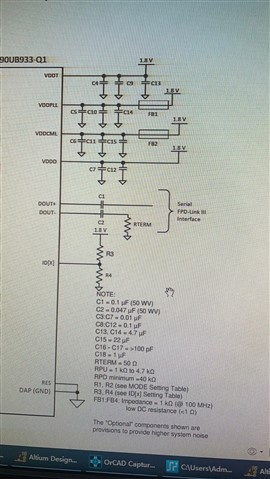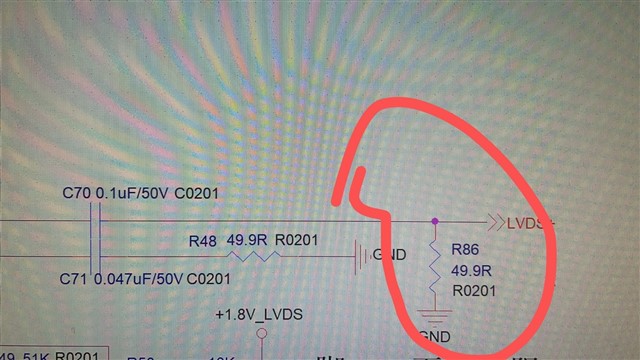Hi Team,
If LVDS+ and LVDS- are used as differential signal output, the power supply and signal are separated, and LVDS+ and LVDS- are differential signals. Do customer need to add a 50R resistor to pull down on the schematic circuit? Or LVDS+ does not need to add pull-down, as shown below



